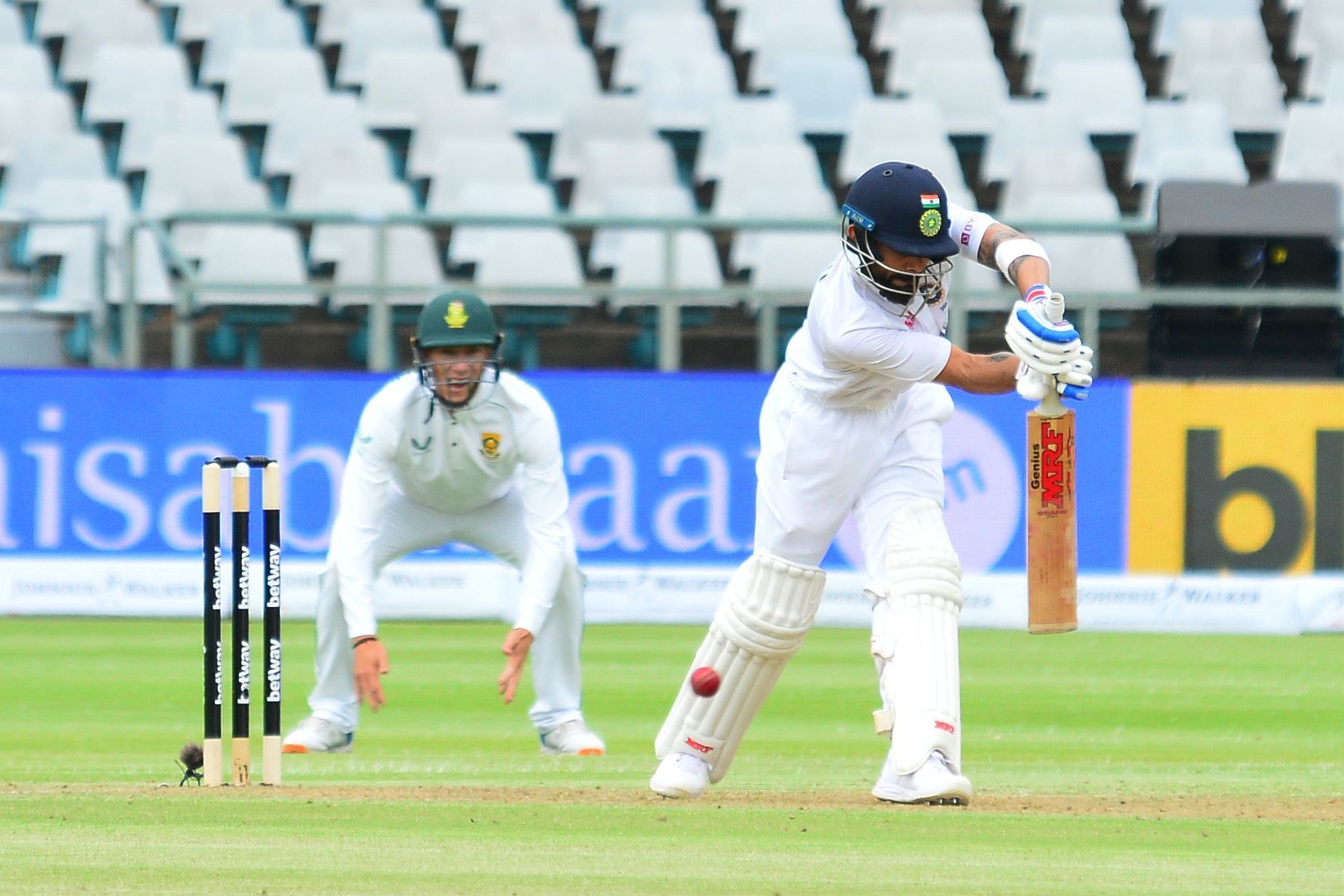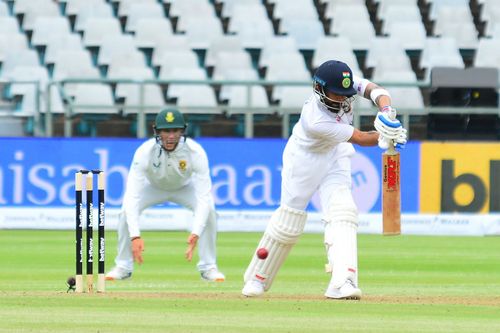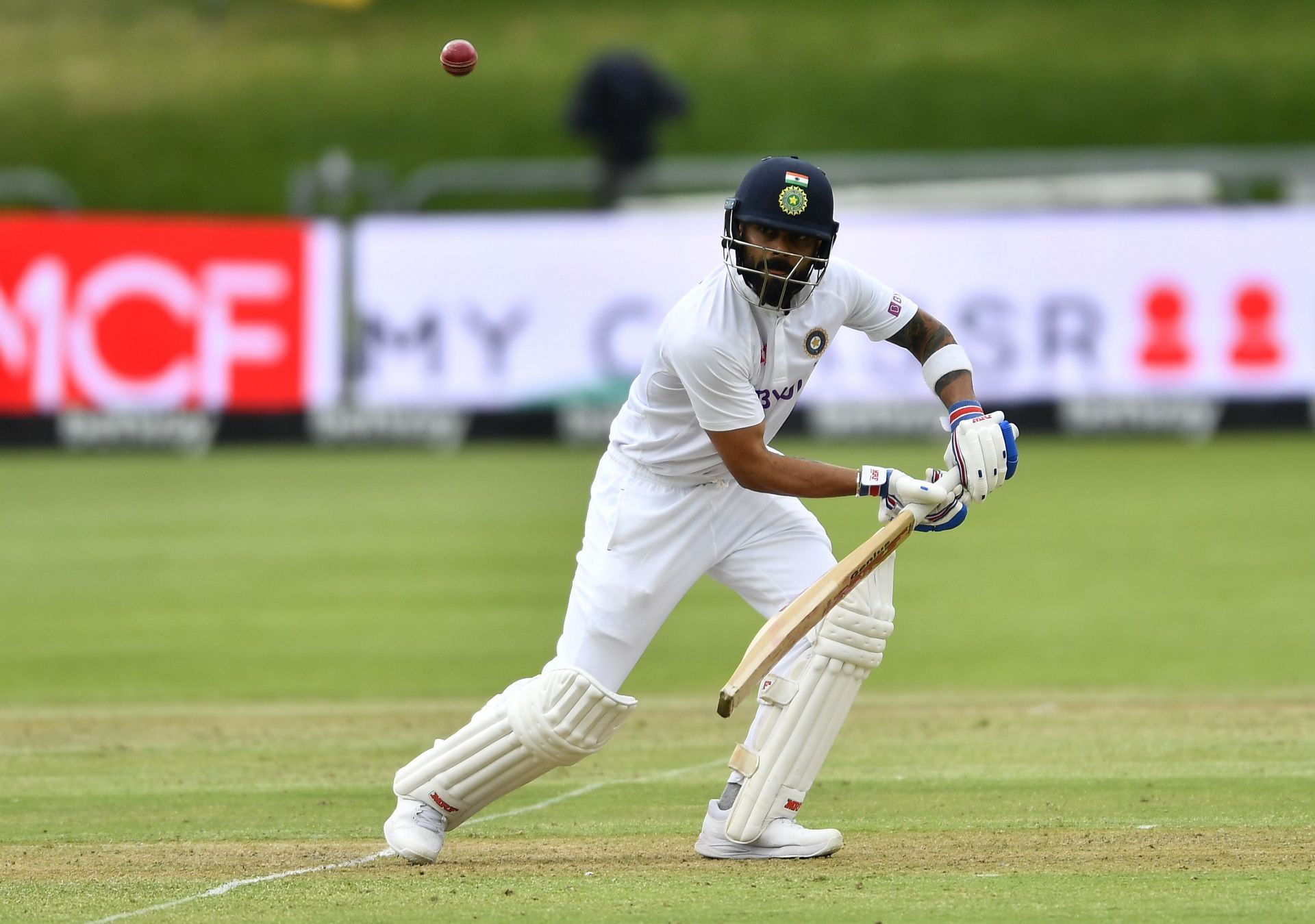
Virat Kohli shows defence can be the best form of attack

A day before the 3rd Test between India and South Africa began, Virat Kohli, who had missed the 2nd game, attended the pre-game press conference, hoping that he would clear the air on his injury and reassure Indian fans that he was in pristine condition to lead the side.
During that interaction, there were several interesting questions and comments from the captain, ranging from the “priceless” contributions Ajinkya Rahane and Cheteshwar Pujara provide, the situation of the series, the thinking behind Rishabh Pant’s madness against Kagiso Rabada and of course, his own form.
Among all the chatter, though, there were a couple of snippets that caught the average cricket-watcher’s attention. When queried about his lack of runs in recent times, Kohli, rather unabashedly, quipped that he was being judged in such a manner because of all the things that he had accomplished.
More tellingly, he said that he didn’t need to prove anything to anyone – again, a revealing comment but one that Kohli, courtesy of the mountain of runs he has scored in international cricket, is perhaps allowed to make.
Deep down, though, he might’ve been itching to prove to himself that he remains one of the premier batters in the world and that this rather elongated patch was just a blip on the road to eternal greatness.
There was, however, another comment that struck those who heard/read about it. When asked about Pant’s rush of blood against Rabada, Kohli empathized with the youngster and conceded that people make mistakes. He then recalled a conversation with MS Dhoni, where the latter had told him to not repeat mistakes for at least 7-8 months.
For those unable to join the dots, Kohli has, over the past couple of years, developed a habit of wafting at deliveries outside off stump. So much so that he has hardly ever gone through 7-8 batting hours without making the same error, let alone not repeating it for three-quarters of a year.
So, when Kohli strode out to the middle, with India pegged back early at 33/2, he had quite a few loose ends to tie up. He had to dig India out of trouble and had to heed to the advice he had given Pant. Oh, by the way, he would’ve also wanted to prove to himself that he can still dominate games of cricket like he once did.
From that perspective, you would’ve expected Kohli to approach his innings with the sort of brashness that his early career was defined by. He would latch onto every full delivery and he would transfer the pressure onto the bowlers. While that method has, more often than not, led to his downfall since 2020, it was still the modus operandi he knew best.
That, though, couldn’t have been farther from what transpired at Cape Town. Kohli didn’t just buckle down, soak in the pressure and keep the South African bowlers at bay. He did something many felt he could never do – leave balls outside off stump.
Virat Kohli was steadfast in his defensive technique
It started at the outset, meaning that people were inclined to believe it was an aberration. The Indian captain took 15 deliveries to get off the mark. During that spell, though, there was nothing loose about his batting.
He gauged the deliveries that were either angled across or nipped away from him and barely put a foot wrong. And, when he did get off the mark, he chose the perfect delivery to unfurl a sumptuous cover drive – a drive that has gotten him into trouble lately but a shot that Kohli will never really put away.

Apart from the discipline outside off stump, there were other areas that Kohli had seemingly improved upon. His bat speed, which often forced him to jab at deliveries outside his eye-line, was a lot more controlled. He edged a couple of balls but the lesser bat speed meant it fell well short of the slip cordon.
The change in bat speed also allowed him to not follow as many deliveries as he has done in the recent past. Just before the Tea interval, Rabada was breathing fire and was causing Kohli all sorts of problems. The Indian captain was beaten on the outside a few times too. Yet, he never made the mistake of following the movement, often letting the ball go past the outside edge.
The biggest difference, though, was perhaps the trigger Kohli used. During his slump, he has been guilty of walking across to the off side too much – something that then entices him to reach out for deliveries that could’ve been left alone.
At Cape Town, the trigger movement majorly went across to middle stump instead of off stump and outside off stump. In the process, he only drove at deliveries that were ought to be driven. That he was better balanced and always playing relatively close to his body only aided his endeavor.
As the innings progressed and India’s middle-order crumbled, Kohli began opening up his shoulders. He drove a few balls on the up - in a manner reminiscent of his mid-2010s dominance and was severe on anything on his pads.
In a nutshell, he had forced the bowlers to bowl to his strengths. And, once they did, the Indian skipper thrived even more. That, by the way, is also how Test batting (at least according to the purists) works, but a style that he has rarely preached in the past couple of years.
The first time Rabada induced a genuine outside edge that could’ve carried, was when India were seven wickets down and Kohli was looking for quick runs. And, when the Indian captain was dismissed, it was more a case of him wanting to optimize what remained of the visitors’ essay.
To an extent, a lot of his struggles have stemmed from his inclination to impose himself on the game and ensure that the opposition knows they are in a fight. Many would suggest it is better to take a back-seat but when talking about Kohli, who has perhaps scaled as many peaks just because he doesn’t back down, the metrics change dramatically.
Thus, it was extraordinary to see the kind of application the Indian captain portrayed – application that seemed to stem from the acceptance that he needed to learn from his mistakes, just like Dhoni had told him and just like Kohli had told Pant.
Simply put, the Indian skipper, in contrast to how he is as an individual, illustrated that defence can be the best form of attack on occasions. He might not have wanted to prove this to anyone, but deep down, he would’ve hoped that he could provide a bit of validation to himself – validation that he still warrants a mention among the best batters on the planet.
Fair to say that everything worked out pretty decently in the end. And while he didn't end his century drought, it was certainly an essay that hinted things might be brighter on the horizon, once again.